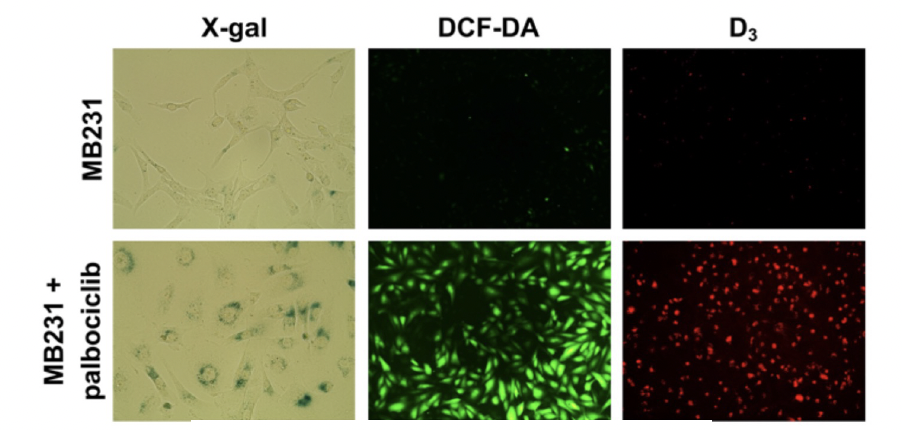Principal Investigator:
Ching-Hsuan Tung
Background & Unmet Need
- Cellular senescence is a state of irreversible cell cycle arrest associated with aging, in which cells stop proliferating
- Senescent cells are drug resistant and may secrete factors such as cytokines into surrounding tissues, causing low-grade inflammation
- Senescence can be caused by cellular stress or damage, including mitochondrial dysfunction, oxidative stress, or DNA damage
- Cells can also become senescent in response to chemotherapy and escape treatment, leading to future tumor recurrence
- Senescence is currently imaged using beta-galactosidase (Xgal); however, this label is not senescence-specific and requires cell fixing and long incubation times
- Unmet Need: Improved methods for detection and imaging of senescent cells
Technology Overview
- The Technology: A novel fluorogenic nanoprobe for labeling cellular senescence via detection of reactive oxygen species (ROS)
- ROS are known to play a role in progression and maintenance of cell senescence, and ROS levels are directly related to induction of cellular senescence
- The inventors have created a novel nanoprobe, D3, which fluoresces in response to high levels of ROS, thereby labeling senescent cells
- PoC Data: In tumor-bearing mice, D3 accumulated quickly and preferentially in tumors when administered intravenously
- Fluorescent signal from D3 was specifically turned on in senescent tumors, which were induced via treatment of tumor-bearing mice with Palbociclib
- The fluorescence signal from D3 in senescent tumors was 3-fold higher than that of non-senescent tumors
Technology Applications
- Imaging nanoprobe to identify senescent tumors following chemotherapy
- Long-term study of disease progression and treatment response for senescence-associated conditions, including aging and fibrosis
- Real-time imaging of changes in cellular senescence
- Identification and isolation of senescent cells for further research
Technology Advantages
- D3 is remarkably stable in normal physiological conditions
- D3 does not require cells to be fixed or to undergo long incubation times
- Fluorescence intensity of D3 is dependent on ROS production level and corresponds to senescence progression, allowing for real-time imaging

Figure 1: D3 detects palbociclib-induced senescence in vitro
Publications
Resources
Intellectual Property
Patents
- Provisional Application Filed
Cornell Reference
- 10582
Contact Information

For additional information please contact
Louise Sarup
Associate Director, Business Development and Licensing
Phone: (646) 825-3932
Email: lss248@cornell.edu

